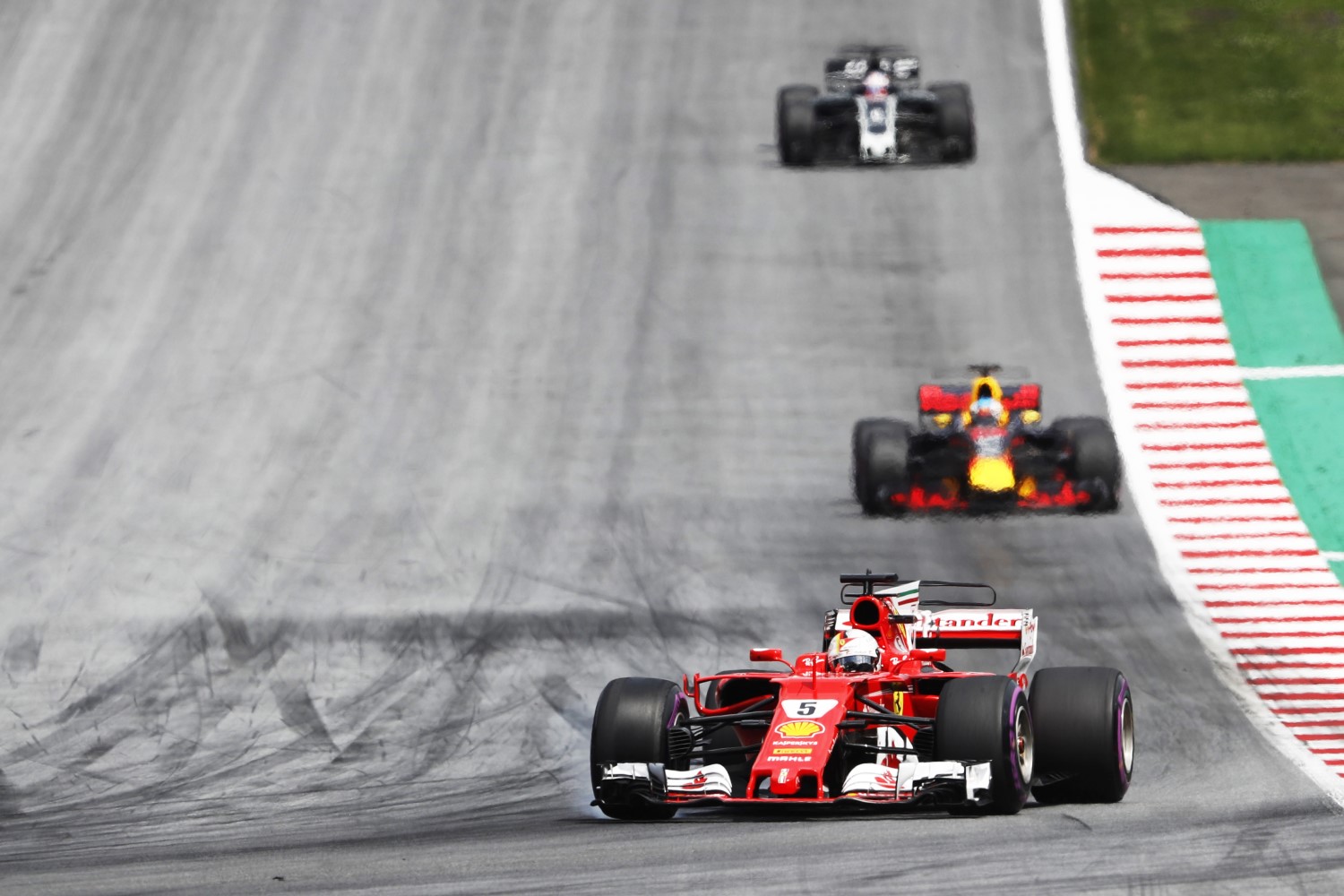Video: Why Is Slipstream Good But Dirty Air Bad?
 |
| Ricciardo tries to get into Vettel's slipstream in Austria |
Last season, F1 drivers and fans alike complained about the lack of passing action that occurred during each race. There were just 435 passes in the 2017 season versus 866 passes in 2016. Why did nobody get passed last season? Simply put, it was the lack of airflow.
A modern F1 car relies on undisturbed air both to create the downforce needed to maintain grip through corners, and keep its tires, brakes, and engine cool. On the straights, drafting behind the car in front to divert air away from a car's aerodynamic pieces is better, because that creates less drag, allowing it to go faster. It's when you get behind a car in the corners do things start going badly.
Since that air is being diverted away from the car, it's not creating enough downforce to carry speed through a turn. Moreover, there's less clean air to cool the brakes, tires, and engine. That's why drivers have such a hard time passing through high speed corners, and often leave a few car lengths of space to get a clean pocket of air.
WTF1 put together an animated video explaining how a slipstream works, and why it makes F1 driver's lives so difficult. Watch for yourself.
